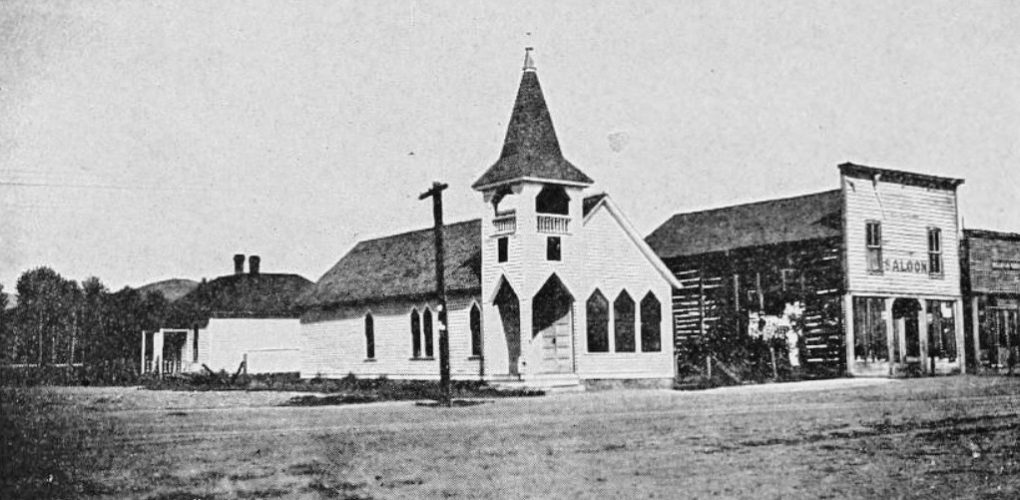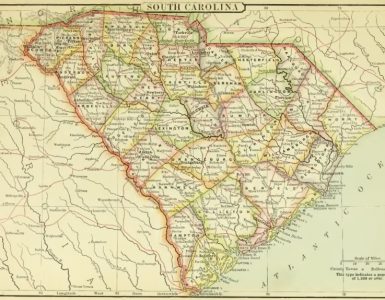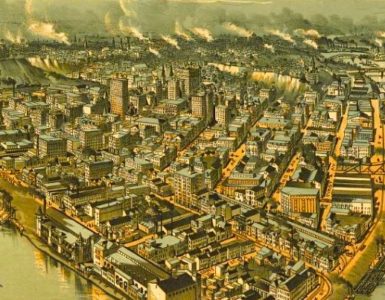While reviewing some old posts, I ran across this bit. This year, 2020, is the Centennial of Prohibition and the bit below shows how opponents and proponents of alcoholic beverages sometimes had convenient associations. I imagine the argument of churches that used saloon property was it was better the facility be used for worship than dispensing alcohol. In the example pictured, I failed to notice the first time around that the caption also commented that the saloon was closed. It also looks like the business next to the saloon is closed. My guess is that the town was built near a mine and the mine played out. The saloon was more than a dispensary of alcoholic beverages because some or all of the following could be found beyond its swinging doors—prostitution, gambling, con-men, and general lawlessness.
The caption for the picture as it was published in The Church on the Changing Frontier, says “No Room for Both. The Presbyterian Church at Melrose, Montana, and its next-door neighbor, a saloon.” One can imagine a scene in a Sergio Leone western with Clint Eastwood striding towards the saloon with spurs jingling as he rolls his malformed cigarette and puts is between his parched lips, but then he staggers, his perpetually squinted eyes open wide as he utters in disbelief, “A church, next to a saloon!” However, churches and saloons were often neighbors in remote frontier areas and in some cases churches made use of a saloon owner’s property. If there was not a church building in town, a saloon sometimes had a hall above or next to it which could be rented for meetings. It is doubtful that the saloon keeper would close his business for the Sabbath, so a worship service may have had to deal with noise from the neighbors. In one case in Montana a church renovated a no longer used saloon for worship. The irony is that on the one hand, Presbyterians and other denominations of the day were often vocal proponents of temperance, but on the other hand, saloon property sometimes benefited the churches. For more about the Presbyterians in Montana see, The Pioneer Work of the Presbyterian Church in Montana, by George Edwards, date uncertain but after 1907.
Barry Waugh





